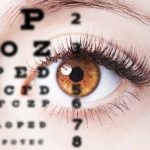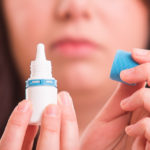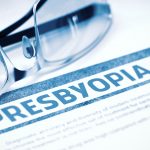What Happened to My Near Vision?
Written by Dr. David Evans Last modified on April 22, 2019

Presbyopia is an age-related condition that causes diminished near vision for people generally 40 years and older. Many presbyopic-aged LASIK patients — who are nearsighted — don’t realize that after LASIK, they will need to start using reading glasses to see things up close.
It’s simple optics. Presbyopic patients lose what’s referred to as accommodation, which means they don’t have the ability to adjust the focal point of the eye based on distance. As such, presbyopic patients must rely on the “natural focal point” for seeing objects. This is the distance at which the eye naturally focuses without glasses and without accommodation. For a near-sighted presbyopic patient, the natural focal point is much closer to the eye — typically at reading distance. This means that a near-sighted presbyopic patient who wears glasses can remove them and see clearly up close. However, after LASIK, this same person’s natural focal point changes, becoming much farther away, at a distance, and the ability to see up close without reading glasses is greatly diminished.
This loss of near vision often takes a little getting used to. One of the biggest surprises for female patients is that they can no longer see up close to put on make-up. They have to learn to use reading glasses and this can be a cumbersome transition. That said, nearly all patients are extremely happy with their LASIK results after the transition.
The moral of the story… If you’re presbyopic-aged — 40 or older — and are considering LASIK surgery to correct your nearsightedness, you should ask your surgeon about what will happen to your near vision. Even though you may have never thought about correction for presbyopia, you may want to consider a presbyopic treatment, such as mono-vision LASIK. This would preserve your near vision as you move to full presbyopia. However, traditional LASIK may still be your best option. The key is to ask your surgeon and become fully educated about the current status of your natural focal point before deciding on any treatment.




